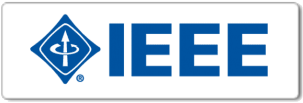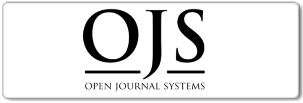IMPLEMENTATION OF INTERNSHIP DATA MANAGEMENT APPLICATION WITH PROTOTYPE METHOD AND USER ACCEPTANCE TEST METHOD
DOI:
https://doi.org/10.52436/1.jutif.2023.4.2.304Keywords:
internship, laravel, prototype model, saas, UAT, user acceptance test, websiteAbstract
Universities generally have programs that offer students internship opportunities in departments within the university. In several universities especially Universitas Ciputra, internships in departments within these universities are mandatory activities for scholarship recipient students. This internship activity involves many parties, including students implementing internships, departments that provide internship vacancies and also student bureaus that monitor the implementation of internships. The obstacle faced in this activity is the difficulty of fulfilling internship vacancies with students who have interests, abilities and profiles that match the requirements of internship vacancies. The student bureau also has difficulty monitoring the progress of the implementation of internship activities in the field. The purpose of this research is to provide a solution to the problems faced in this internship in the form of a website application developed using the Prototype Model method using the Laravel framework and tested using the User Acceptance Test (UAT) method. The result of this research is a website prototype that can be used. The results of the UAT test show that the application made can help solve problems in this internship activity with a user satisfaction level of up to 96%.
Downloads
References
Samidjo, “Efektifitas Pelaksanaan Magang Industri Mahasiswa Program Studi Pendidikan Teknik Mesin,” 2017. doi: https://doi.org/10.30738/jtv.v5i2.2528.
T. Dedy Fu’ady and B. Suhendar, “Analisa Perancangan Sistem Informasi Pendaftaran Magang Kerja Menggunakan Waterfall,” 2020. doi: https://doi.org/10.47080/saintek.v2i2.92.
D. Setyorini, B. Lestari, P. Purwanto, W. Winarno, and E. M. Sagoro, “Model Magang Industri Guna Pencapaian Standar Kompetensi Lulusan Fakultas Ekonomi Universitas Negeri Yogyakarta,” Jurnal Pendidikan Akuntansi Indonesia, vol. 14, no. 2, Feb. 2017, doi: 10.21831/jpai.v14i2.12868.
S. Verma, “Analysis of Strengths and Weakness of SDLC Models,” International Journal of Advance Research in Computer Science and Management Studies, vol. 2, no. 3, 2014, [Online]. Available: www.ijarcsms.com
R. D. Amlani, “Advantages and Limitations of Different SDLC Models,” International Journal of Computer Applications & Information Technology, vol. I, 2012, [Online]. Available: www.ijcait.com
Munawar, Pemodelan Visual dengan UML. Graha Ilmu, 2005.
W. N. Suliyanti, “Studi Literatur Basis Data SQL dan NoSQL,” vol. 8, no. 1, 2019.
Janner Simarmata dan Iman Paryudi, Basis Data. CV Andi Offset, 2006.
H. Ilham, B. Wijayanto, and S. P. Rahayu, “Analysis and Design of User Interface/User Experience with The Design Thinking Method in The Academic Information System of Jenderal Soedirman University,” Jurnal Teknik Informatika (Jutif), vol. 2, no. 1, pp. 17–26, Jan. 2021, doi: 10.20884/1.jutif.2021.2.1.30.
P. Z. V. T. Baron Schwartz, High Performance MySQL, 3rd Edition. O’Reilly Media, Inc., 2012.
Jennifer Robbins, Learning Web Design: A Beginner’s Guide to HTML, CSS, JavaScript, and Web Graphics 5th Edition. O’Reilly Media, 2018.
D. Wijonarko and F. W. S. Budi, “Implementasi Framework Laravel dalam Sistem Pendaftaran Mahasiswa Baru Politeknik Kota Malang,” Jurnal Informatika dan Rekayasa Elektronik, vol. 2, no. 2, p. 35, Dec. 2019, doi: 10.36595/jire.v2i2.116.
S. Susanti, E. Junianto, and R. Rachman, “Implementasi Framework Laravel Pada Aplikasi Pengolah Nilai Akademik Berbasis Web,” JURNAL INFORMATIKA, vol. 4, no. 1, 2017, doi: https://doi.org/10.31294/ji.v4i1.1562.
D. Purnama Sari and R. Wijanarko, “Implementasi Framework Laravel pada Sistem Informasi Penyewaan Kamera (Studi Kasus di Rumah Kamera Semarang),” Jurnal Informatika dan Rekayasa Perangkat Lunak, vol. 2, no. 1, p. 32, Mar. 2020, doi: 10.36499/jinrpl.v2i1.3190.
B. Rizki, P. Surya, A. Putra Kharisma, and N. Yudistira, “Perbandingan Kinerja Pola Perancangan MVC, MVP, dan MVVM Pada Aplikasi Berbasis Android (Studi kasus : Aplikasi Laporan Hasil Belajar Siswa SMA BSS),” 2020. Accessed: Apr. 27, 2022. [Online]. Available: https://j-ptiik.ub.ac.id/index.php/j-ptiik/article/view/8237
P. Pandit and S. Tahiliani, “AgileUAT: A Framework for User Acceptance Testing based on User Stories and Acceptance Criteria,” 2015.
J. O. Paul Ammann, Introduction to Software Testing 2nd Edition. Cambridge University Press, 2016.



























